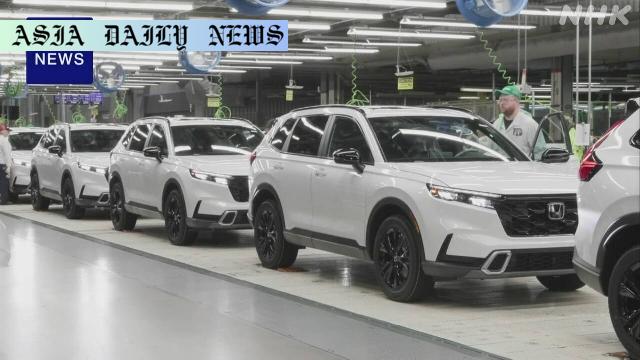Hybrid Vehicles: Honda plans to increase hybrid vehicle production in the United States in response to tariffs and rising demand.

Honda Responds to Tariffs by Boosting Hybrid Vehicle Production
In a significant strategic move, Japan’s Honda Motor has unveiled plans to escalate hybrid vehicle production in its United States-based factory in Indiana. This decision reflects the automaker’s adaptive response to the changing automotive landscape, spurred by the U.S. government’s tariff measures under the Trump administration and shifting consumer preferences in favor of hybrid vehicles. Honda’s decision to double down on hybrid production is also aligned with a broader shift across the automotive sector, which seeks to balance environmental awareness, technological innovation, and market demand.
The Indiana factory currently churns out approximately 250,000 vehicles annually, 60% of which are hybrid models, indicative of the growing popularity of this segment among American consumers. With hybrid cars becoming increasingly ubiquitous, Honda is not only poised to cater to this demand but also plans to introduce an expanded variety of hybrid models to diversify its offerings and stay competitive in the North American markets.
Expanding Local Procurement to Combat Tariffs
An equally noteworthy aspect of Honda’s strategy involves a determined push to source vehicle parts locally within the United States. The Trump administration’s tariffs have created a complex and often challenging manufacturing environment for international automakers like Honda. By expanding its procurement of U.S.-made vehicle components, Honda intends to mitigate the impact of these tariffs while simultaneously contributing to the local economy through increased material sourcing and job creation.
This realignment also positions Honda as a forward-thinking participant in the automotive sector, addressing government policies with strategic flexibility. While electric vehicles (EVs) have captured significant attention in recent years, Honda’s move to enhance hybrid production reflects broader trends within the industry, given the relatively slower adoption rate of EVs due to infrastructural and affordability challenges.
Building an Optimal Production System for Future Growth
Honda has highlighted its focus on maximizing efficiency at its Indiana factory to prepare for the anticipated rise in demand for hybrid cars. Shimizu Daisuke, the plant manager, underscored that the company is closely monitoring U.S. economic and tariff policies to build an optimal production system. With hybrid technology standing at the intersection of efficiency and advanced innovation, Honda’s expansion of resources into this area could solidify its role as a global leader in the hybrid automotive space. This strategy also serves the dual purpose of improving Honda’s global environmental footprint while addressing increasing regulatory standards for automobile emissions.
Moreover, this pivot toward hybrids enables Honda to cater to both environmental-conscious U.S. consumers and those seeking enhanced fuel economy and lower running costs. This is particularly critical in the current economic environment where energy consumption and economic factors heavily influence consumer purchasing behavior.
Commentary
Honda’s Strategic Move: A Necessary Evolution
Honda’s decision to increase hybrid vehicle production in the United States is indicative of the brand’s resilience amid challenging economic landscapes. It demonstrates a dual focus on navigating the practicalities of U.S. trade policy while simultaneously tapping into an evolving market. With hybrid cars steadily becoming a preferred choice for many American consumers, Honda’s emphasis on expanding model options and enhancing production capabilities is timely and forward-thinking.
One of the standout elements in this strategy is Honda’s drive to localize part procurement to lessen the burdens of tariffs. This not only showcases a quick adaptation to restrictive policies but demonstrates a long-term commitment to the U.S. economy. Such moves may foster goodwill and elevate the brand’s standing among local consumers as a company contributing to economic growth. This strategy complements Honda’s ambitious global mission to promote environmentally-conscious technology, serving as a cornerstone of its future developments.
The Evolvement of Hybrids Amid Competition
The automotive sector is undergoing transformative evolution, with electric vehicles often at the center of public discourse. However, Honda’s reassertion of focus on hybrid vehicles shows they recognize the challenges accompanying immediate EV adoption. The hybrid market offers a unique compromise for consumers: reduced emissions and excellent fuel efficiency without the limitations of EV charging networks. This positions Honda to meet consumer needs and industry demands strategically and effectively.
With Honda’s clarity on modeling a sustainable and scalable production system for hybrids, it is evident they are not just reacting to immediate scenarios but charting a thoughtful course for sustained relevance and leadership in the competitive North American market.


